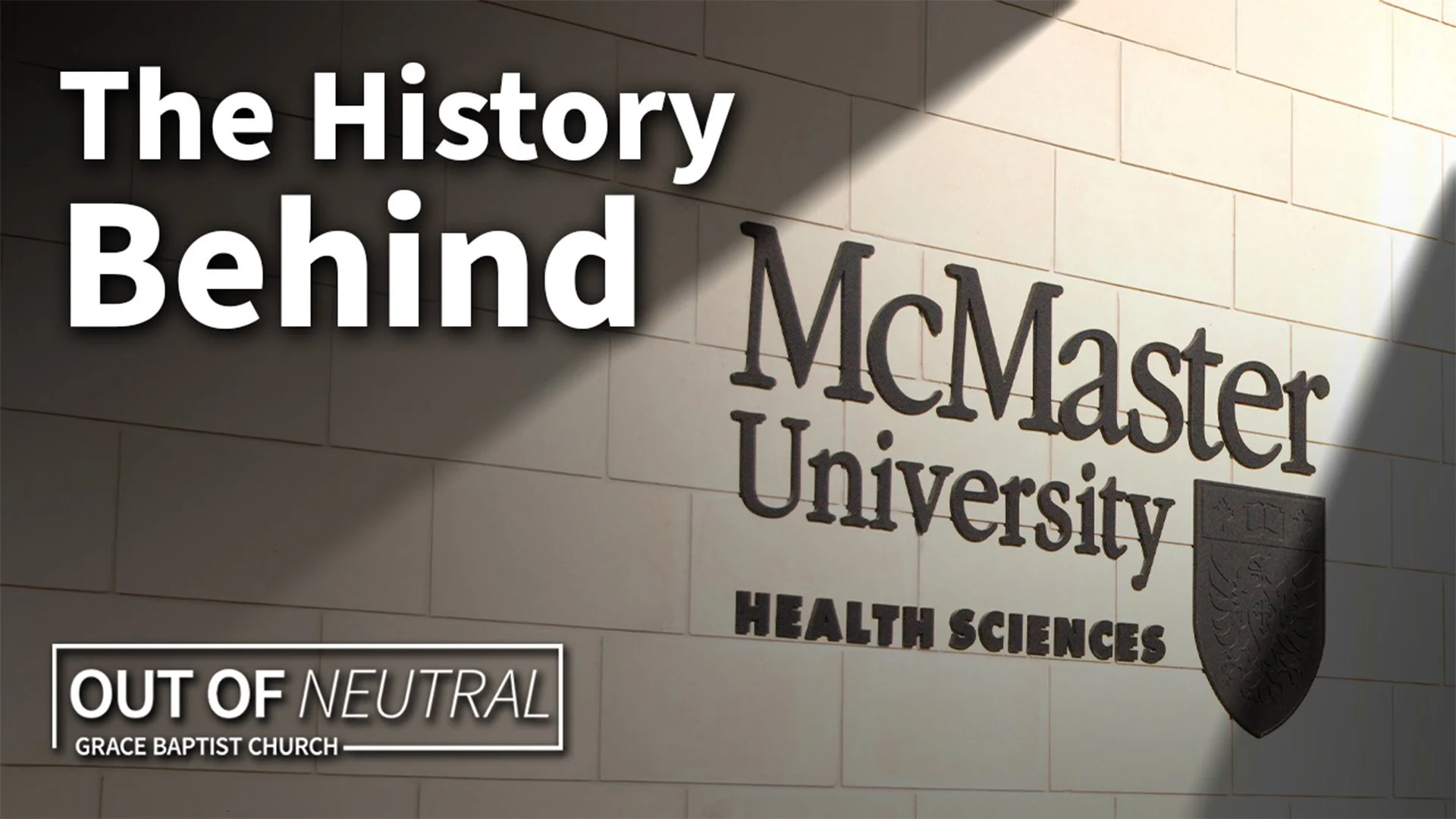What comes to mind when you think of McMaster University? Great medical school? Decent football team? Large, sprawling campus? Whatever image you have of McMaster University, you probably weren’t aware that, more than anything else, it was once what drew Baptists in central Canada together, and then split them apart - understanding how is an important part of the history of the Fellowship of Evangelical Baptist Churches of Canada.
The formation of McMaster University
While Baptist churches in Ontario thrived in many ways throughout the 1800s, it was a centre of theological and literary studies called the Canadian Literary Institute that would give unity to them. In 1860, Robert Alexander Fyfe, who had pastored what is now known as Jarvis Street Baptist Church became the school’s first principal and it thrived under his leadership. After his death, the school was relocated to a building in Toronto, funded by a millionaire Baptist senator named William McMaster, and renamed Toronto Baptist College. When McMaster died, he left funds to start a Baptist university. Toronto Baptist College thus became McMaster University in 1887. The theological education provided by McMaster University gave the motivation needed for the formation of the Baptist Convention of Ontario and Quebec in the following year.
The Fundamentalist-Modernist Controversy
McMaster University provided theological education for many young pastors, but in the 1920s, it fell prey to what is known as the Fundamentalist–Modernist Controversy. Debate erupted between those who held to the inerrancy of Scripture and the atoning death of Jesus (Fundamentalists), and those who tried to reinterpret Christian beliefs in light of contemporary science, philosophy, and culture (Modernists).
A popular professor named Laurance Henry Marshall was at the centre of the storm. He voiced his belief in evolution, rejected the infallibility of God’s Word, and dismissed the belief that Jesus died on the cross on behalf of sinners to satisfy God’s righteous anger. While there were Bible-believing men leading the McMaster administration, many of the university’s donors supported the new liberal theology, and so it seemed to them fair to give voice to liberal teachings in the classroom. Many were convinced otherwise.
The influence of T.T. Shields
At the forefront of the opposition to Marshall and the liberal teachings that had crept into McMaster was a gifted preacher and pastor named T.T. Shields. He led Jarvis Street Baptist Church, the largest Baptist church in the country at the time, and his newspaper, the Gospel Witness, reached 30,000 subscribers in 16 countries. He was vocal in his criticism of both liberal theology and McMaster University, and in 1926 was eventually expelled from the Baptist Convention. Seventy churches followed his exit and a year later, he opened a new school, Toronto Baptist Seminary which became their symbol of unity. In 1928, the Union of Regular Baptist Churches of Ontario and Quebec was formed with 77 member churches.
Growing pains and a new fellowship
The newly-formed group had high hopes for growth and unity but these hopes were short-lived. In 1931, T.T. Shields insisted that the youth association and the women’s missionary society needed to be under the authority of Union churches, and when some of the other pastors disagreed, they were expelled from the Union. Nine churches were forced out and two years later, the expelled pastors joined with other Evangelical Baptist churches which had never been a part of the Union, and they formed the Fellowship of Independent Baptist Churches of Canada. They were Baptists united in their opposition to liberalism, but also in their dislike of the abrasive and often authoritarian leadership of Shields. From 1933 to 1950, the Fellowship grew from twenty-seven churches to one hundred twenty-four.
Tensions mount as Shields departs
Meanwhile, T.T. Shields caused more and more dissent within the Union. The final straw came when Shields fired the President of Toronto Baptist Seminary, W. Gordon Brown. Shields was against allowing students from Fellowship churches into Toronto Baptist Seminary while Brown actively developed greater cooperation. Upon Brown’s removal, a majority of teachers as well as fifty of the seventy-five students left Toronto Baptist Seminary and in 1949 formed Central Baptist Seminary, which would later become Heritage College and Theological Seminary. Frustrated with the dissent, Shields pulled his church out of the Union and a small group of churches formed the Association of Regular Baptist Churches, a group which dwindled to ten or so churches in the early 2000s and eventually disbanded.
The birth of the Fellowship of Evangelical Baptist Churches in Canada
In 1953, the Union of Regular Baptists (now free from the leadership of T.T. Shields) and the Fellowship of Independent Baptists (which had originally been expelled from the Union by T.T. Shields) formed the Fellowship of Evangelical Baptist Churches in Canada. They were joined in 1965 by the Regular Baptists of British Columbia and the Baptist congregations in the Prairie Provinces Convention and became a national fellowship.
No more wrangling!
Jack Scott, then pastor of Forward Baptist Church in Toronto, summarized well the spirit of the Fellowship’s founders: “There should be a spirit among the churches of evangelical Baptists that we should go out and preach the gospel, build churches, get souls saved, get involved in missions and not spend our time wrangling.” May that spirit characterize our witness today!
In awe of Him,
Paul














